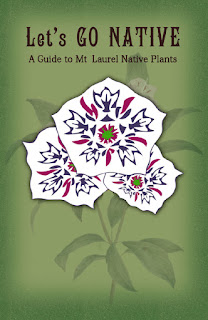This booklet represents the inspirational work of many people. We are
especially indebted to Sue Webb, Naturalist and Native Landscape Consultant at Petals from the Past Nursery for her botanical expertise and knowledge. Also special appreciation to Mark Partain for his technical and creative insight and his graphic contributions. Also appreciation is expressed to the Mt Laurel Garden Group who sponsored this effort and especially to members, Rick Tice, Renee Prescott, Ginny Randolph and Ward Tishler whose diligent effort helped put this booklet in the hands of Mt Laurel residents. It has been truly a labor of love.
Remembrance
and appreciation is expressed to the late Rob Gardner, late curator at
the North Carolina Botanical Garden, his work “Going Native” was originally published in the April 2000 issue of the magazine Wildlife in North Carolina and was the inspiration for this booklet. His
professional works provided a wonderful source for defining native plants.
Thanks to the North Carolina Botanical Garden
at The University of North Carolina at Chapel Hill for giving permission to use Rob Gardner’s article as a professional and inspirational resource for this booklet.
And finally appreciation is expressed for the printing of this
booklet by EBSCO.
Click here to download the Booklet as a PDF
booklet by EBSCO.
Click here to download the Booklet as a PDF














